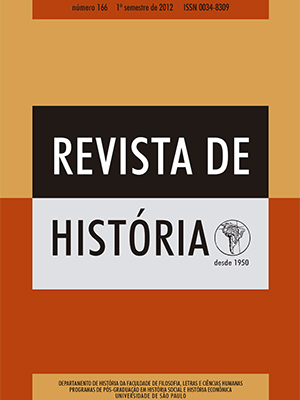Captive Population Growth in Agro-Exporting Economy: Minas Gerais, in the Nineteenth Century
DOI:
https://doi.org/10.11606/issn.2316-9141.v0i166p245-283Keywords:
Slave trade, Natural Reproduction, Minas Gerais, Nineteenth CenturyAbstract
This article discusses the possibilities of maintenance and/or expansion of possession of captives, whether by means of trade or of natural reproduction in properties belonging to three families of captive owners of Zona da Mata Mineira - Dias Tostes, Paula Lima e Barbosa Lage. Through intercrossing of a variety of sources concerning those families, it is concluded that the two options for increasing the number of captives - natural reproduction and the slave trade - seem to have been not exclusive, but complementary. The choice of one or another has depended, above all, upon training period of the captives, the greater or lesser proximity to the transatlantic trade and also upon the economic reasoning undertaken by there in search for the best pattern for the maintenance and/or expansion of their slaves possessions.Downloads
Download data is not yet available.
Downloads
Published
2012-06-30
Issue
Section
Articles
License
Autores que publicam nesta revista concordam com os seguintes termos:
- Autores mantém os direitos autorais e concedem à revista o direito de primeira publicação, com o trabalho simultaneamente licenciado sob a https://creativecommons.org/licenses/by/4.0/ (CC BY). Esta licença permite que outros distribuam, remixem, adaptem e criem a partir do seu trabalho, mesmo para fins comerciais, desde que lhe atribuam o devido crédito pela criação original. É a licença mais flexível de todas as licenças disponíveis. É recomendada para maximizar a disseminação e uso dos materiais licenciados.
- Autores têm autorização para assumir contratos adicionais separadamente, para distribuição não-exclusiva da versão do trabalho publicada nesta revista (ex.: publicar em repositório institucional ou como capítulo de livro), com reconhecimento de autoria e publicação inicial nesta revista.
- Autores têm permissão e são estimulados a publicar e distribuir seu trabalho online (ex.: em repositórios institucionais ou na sua página pessoal) a qualquer ponto antes ou durante o processo editorial, já que isso pode gerar alterações produtivas, bem como aumentar o impacto e a citação do trabalho publicado (veja O Efeito do Acesso Livre).
How to Cite
FREIRE, Jonis. Captive Population Growth in Agro-Exporting Economy: Minas Gerais, in the Nineteenth Century. Revista de História, São Paulo, n. 166, p. 245–283, 2012. DOI: 10.11606/issn.2316-9141.v0i166p245-283. Disponível em: https://revistas.usp.br/revhistoria/article/view/48644.. Acesso em: 20 jul. 2024.







